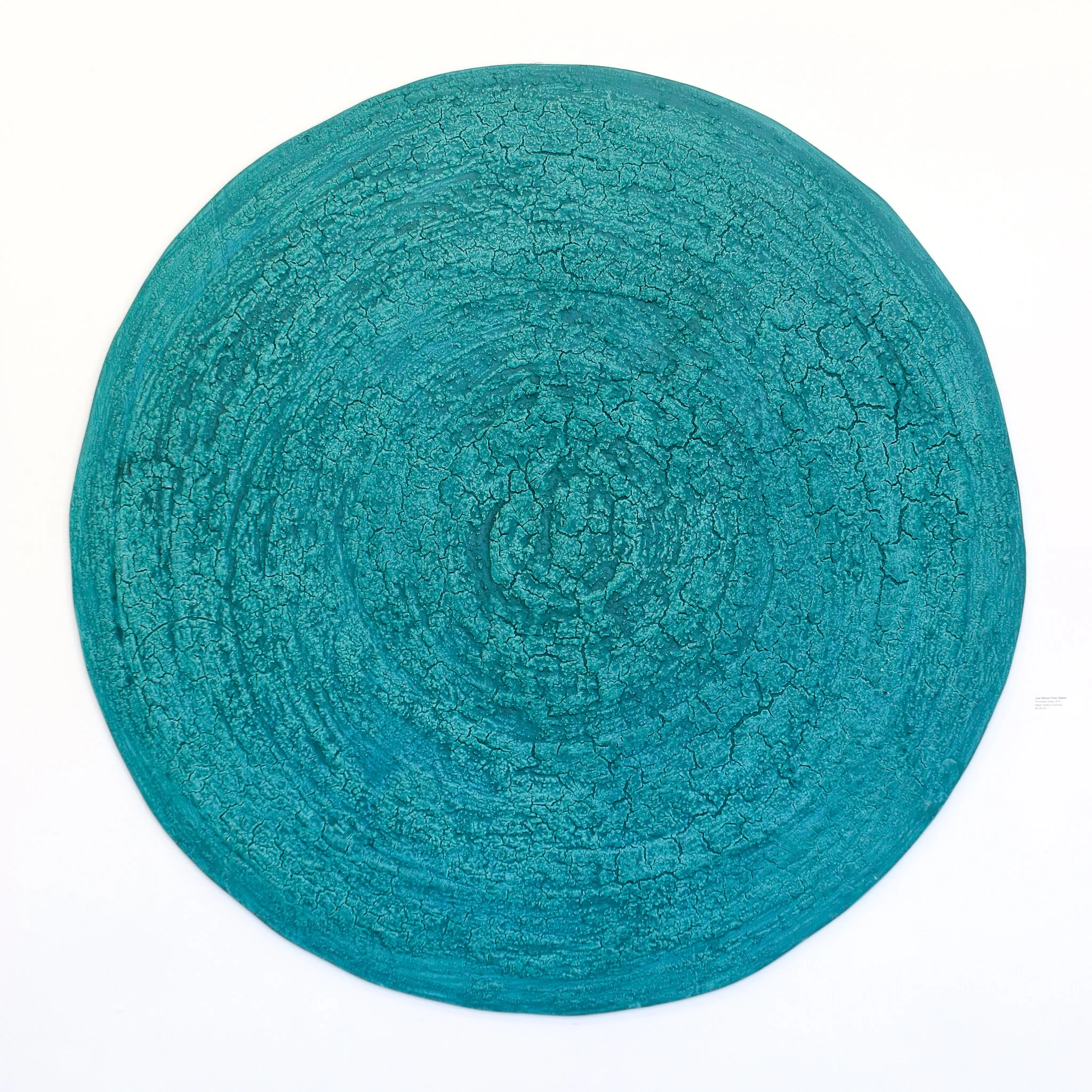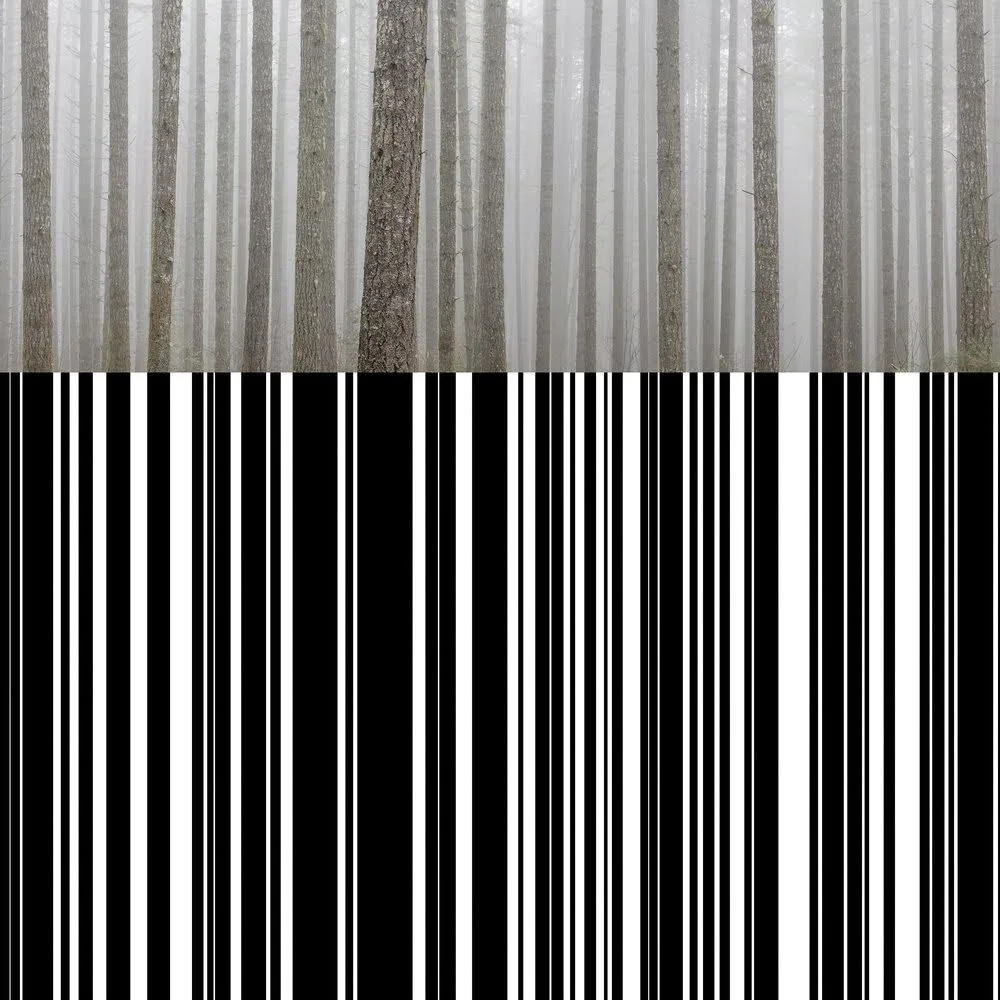George Rose: Photographic Landscapes at the Wildling Museum
Solvang-based photographer George Rose’s crisp, expressive landscapes bring the grace and power of California wine country to the Wildling Museum of Art & Nature’s current exhibition.
Rose’s emotionally-charged, often sculptural, photographs pay homage to California’s breathtaking landscapes, where he has lived and worked for decades as a photographer and a wine industry professional. From the luminescent haunting of early morning mist in the Pine Forest of Napa Valley to the billowing storm clouds that blanket golden fields in Santa Ynez, Rose’s photographs are nothing short of stirring.
A contributing photographer to Getty Images since the company’s formation and a two-time Pulitzer Prize nominee for his photographs published in the Los Angeles Times, Rose, who turned 67 this year, relays to Lum Art Zine his remarkable story that traverses the digital photography revolution, along with major cultural shifts in music, politics and print media.
George Rose, Gathering Storm Clouds, Camp 4, Santa Ynez, 2017. Courtesy the Artist.
GEORGE ROSE:
Getting Started
A few small gestures in my early life played a specific role in my path to photography: My mother loved taking black and white home photos with a Zeiss Icon folding camera (she would drop off the roll of film at the local drugstore for processing). My father was a regional manager with Fox West Coast Theatres in the 1950s and 1960s. Needless to say, I watched a lot of movies, which may be where I discovered the magic of visual storytelling.
When I was ten, my parents gave me an inexpensive Kodak Hawkeye Instamatic camera. I used that camera to take my first grainy news photo off our home television screen as astronaut John Glenn climbed into a Mercury spacecraft capsule in 1962 before his three orbits of the Earth.
When I was sixteen, I took a part-time job as a copy messenger at the local daily newspaper (the Pomona Progress Bulletin). It was there that the two staff photographers took me under their wings and taught me how to take pictures, process the pictures, and most importantly, scan these images onto plastic plates for reproduction in the newspaper.
Offset printing was not yet a thing and computers were a few years away from storming newsrooms. Concurrently, my brother, who was serving in Vietnam, purchased my first “real” camera, a Minolta SRT 101. He shipped it to me before my eighteenth birthday. I was off to the races!
George Rose, Vineyard Oak Tree, Domaine Serene, Newberg, OR, 2016. Courtesy the Artist.
Early Newspaper Years
I was 20 years old when the publisher of the Claremont Courier, Martin Weinberger, got in touch with me and asked me to come work at his weekly newspaper in nearby Claremont. This newspaper served a highly educated college community. The New York Times was the second most read paper in town. The Los Angeles Times was third.
Photography, in the form of picture stories and prominently displayed portraits, played an important role in the storytelling of the Claremont Courier. Suddenly, I was photographing many of the intellectuals and world-famous academics who would visit Claremont and its notable colleges. Writers Susan Sontag and Nora Ephron, anthropologist Margaret Mead, philosophers Ivan Illich and Mortimer Adler, economists Milton Friedman and Peter Drucker, actress Jane Fonda and her husband/politician Tom Hayden, all came to town.
National political candidates also made their way to the doorstep of the Claremont Courier. Ronald Reagan, Jimmy Carter, Edward Kennedy, to name a few. In the spirit of Life Magazine, the Courier’s photography drove the design of the newspaper. Suddenly, this tiny small-town weekly newspaper (with a circulation of 5,000) was winning national awards for its design and use of photography. And since I was the sole staff photographer, I was gaining attention and winning national awards for photography.
The attention caught the eye of editors at the New York Times, the Louisville Courier Journal & Times, and the Los Angeles Times. In 1977, despite its lackluster photography usage, I chose the Los Angeles Times as my next move, specifically for its access to powerful people. The Times nominated me for a Pulitzer Prize for a series of 1980 presidential candidate portraits (there were 13 candidates for president in 1980). The Times also nominated me for a news photography Pulitzer for my images of the destructive Agoura Hills/Malibu fires in 1978.
Access to politicians, celebrities, business power brokers, culinary stars, and oh yes, major league sporting events was my key reason for working at the Times. Upon leaving, I was in demand as a freelance photographer with Rolling Stone, Newsweek, Time, Sports Illustrated and USA Today. At age 30 and in the middle of a successful freelance career, I purchased a small Northern California weekly newspaper, the Mendocino Grapevine, based in Mendocino County, California. The masthead was designed by R. Crumb and the single most important continuing storyline was the emergence of the marijuana crop. It was in Mendocino County where I made a connection with the Fetzer Family, ultimately leading to a communications job with Fetzer Vineyards.
George Rose, Autumn, Cougar Ridge, Sonoma County, 2007. Courtesy the Artist.
Wine Country & Landscapes
Being outdoors has always been my form of meditation. I grew up hiking throughout the Sierra Nevada Mountain Range, including many months throughout the years spent on the John Muir Trail. Before my entry into the wine world, I dreamed of being the next Ansel Adams. And after I met him, I found I didn’t have the patience for landscape photography, at least at that early stage in my life. I did have the technical skills, however, to do and be anything I wanted as a photographer.
I’m a social person, not a loner, but I enjoy getting lost in open spaces. Photography by nature is a “lone” occupation, meaning it’s generally accomplished by not including other people in the process. The individual who is taking the picture breathes his or her life and perspective into each image, whether it be a wine country landscape or a celebrity portrait. It’s not an accident that I have “rediscovered” the art of landscape photography at this late moment in my life.
George Rose, Tidal Basin, Morro Bay, 2013. Courtesy the Artist.
The Artistic Process
I don’t use or own Photoshop. I do, however, use Lightroom, an Adobe program that I rely on for quick editing, organizing, copying and tweaking (adjusting the contrast, cropping, etc.). My images are unfettered. I must admit, I see my world as if I’m looking through polarized sunglasses. (I have blue eyes and I routinely wear sunglasses outdoors.)
Every individual sees light differently and the digital age has heightened and expanded those differences. Full sensor digital cameras offer a precise view of the world that can be manipulated for interpretation on many levels. My images are crisp and clean, featuring honest colors that I believe to be true in nature.
I like the play of light and shadows, but sometimes I want to see what’s in those shadows. I’m not a fanatical purist or a fantasist. I am, however, put off by all the highly creative and phantasmagorical Photoshopped images populating Instagram. In my mind, there is no reason to “improve” on nature or one’s appearance. Reality is good enough for me. There is an old saying, “the camera does not lie.” Obviously, this quaint notion has been turned on its head in the digital age. I suppose this is the reason I’m comfortable calling myself a photojournalist and not an artist. I imagine that you can be both at the same time, but I’m just not there yet.
Equipment
I use two Canon Mark III cameras, one with a 24mm to 70mm lens and the other with a 70mm to 200mm lens. As I have gotten older, these cameras have become a heavy burden on my body. That said, I carry them everywhere I go. A tripod is put into service when a longer exposure is required. I expect Apple to introduce a professional camera built into an iPhone, hopefully before I die.
George Rose. Smoky Sky & Lone Oak, Solvang, 2016. Courtesy the Artist.
Influences
I admit to liberally “stealing” ideas from other photographers, including those by portrait and fashion photographer Richard Avedon, landscape icon Ansel Adams, and street photographers Garry Winogrand and Diane Arbus. I have had the good fortune to meet three of these four greats and was able to discuss their photography techniques while watching them work.
Current Status
My new coffee table book, "Wine Country Santa Barbara County,” was released this fall, and is the basis for my current exhibit at the Wildling Museum of Art & Nature in Solvang.
I am married to Denise Rose, a Santa Barbara native and a former wine industry public relations professional-turned teacher. We met while working in the business in Sonoma County. Our daughter Alex Rose is a talented musician and singer/songwriter living the dream in Los Angeles. Denise and I currently live in Solvang, California, where I am on the Board of Directors (Vice President) at the Wildling Museum of Art & Nature. I am passionate about the museum's mission to inspire and educate our community and visitors to cherish and conserve our natural lands and wildlife by bringing awareness through the arts.
Reading List
I just re-read “Cadillac Desert” by Marc Reisner; recently read “Into Thin Air” by Jon Krakauer and am currently reading “Walking: One Step At A Time” by Erling Kagge.
Santa Barbara County & Beyond: Recent Photographic Landscapes by George Rose, is on view November 16, 2019, to March 16, 2020, at the Wildling Museum of Art and Nature.
George Rose, Setting Moon, Santa Ynez Valley, 2018. Courtesy the Artist.





